Leadership Reflection: Workplace Leadership, Team Dynamics, and Change
VerifiedAdded on 2022/11/23
|5
|1123
|106
Journal and Reflective Writing
AI Summary
This reflective assignment analyzes the student's experience with leadership within an organization, focusing on a situation where a team leader's departure created instability. The student applies the theory of cognitive dissonance to understand the impact of this event on team dynamics and leadership effectiveness. The reflection explores the student's efforts to lead the team, emphasizing the prioritization of team goals, fostering communication, and adapting leadership styles to address challenges. The assignment delves into the influence of teamwork on the student's development, identifying both positive and negative factors affecting team performance. The student discusses strategies for managing employee behavior during organizational changes, including the importance of empathy, clear communication, and realistic expectations. The reflection highlights the interplay of empathetic and strict approaches in managing employee involvement and resistance to change, ultimately providing insights into enhancing leadership and team performance within an organizational context.
1 out of 5
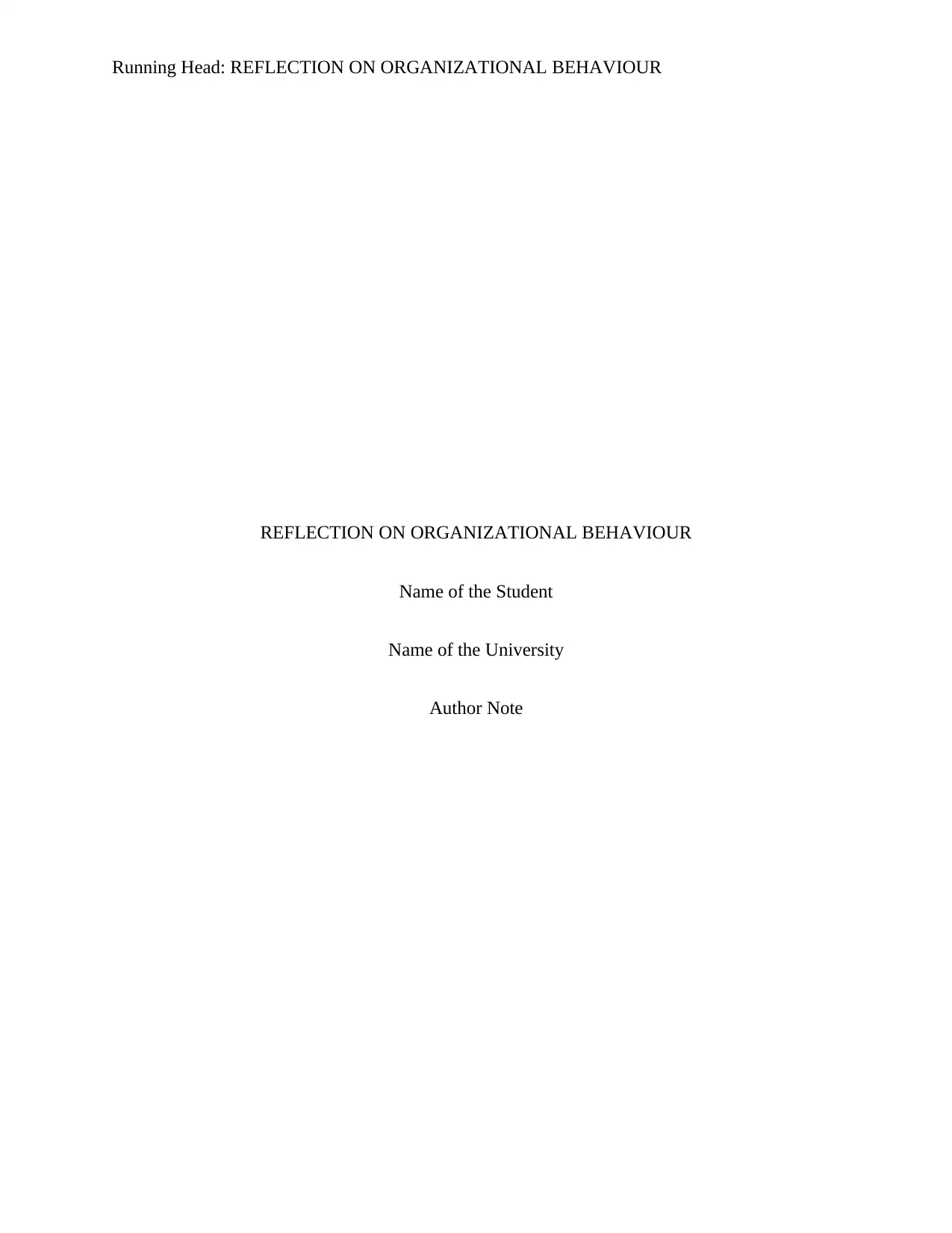
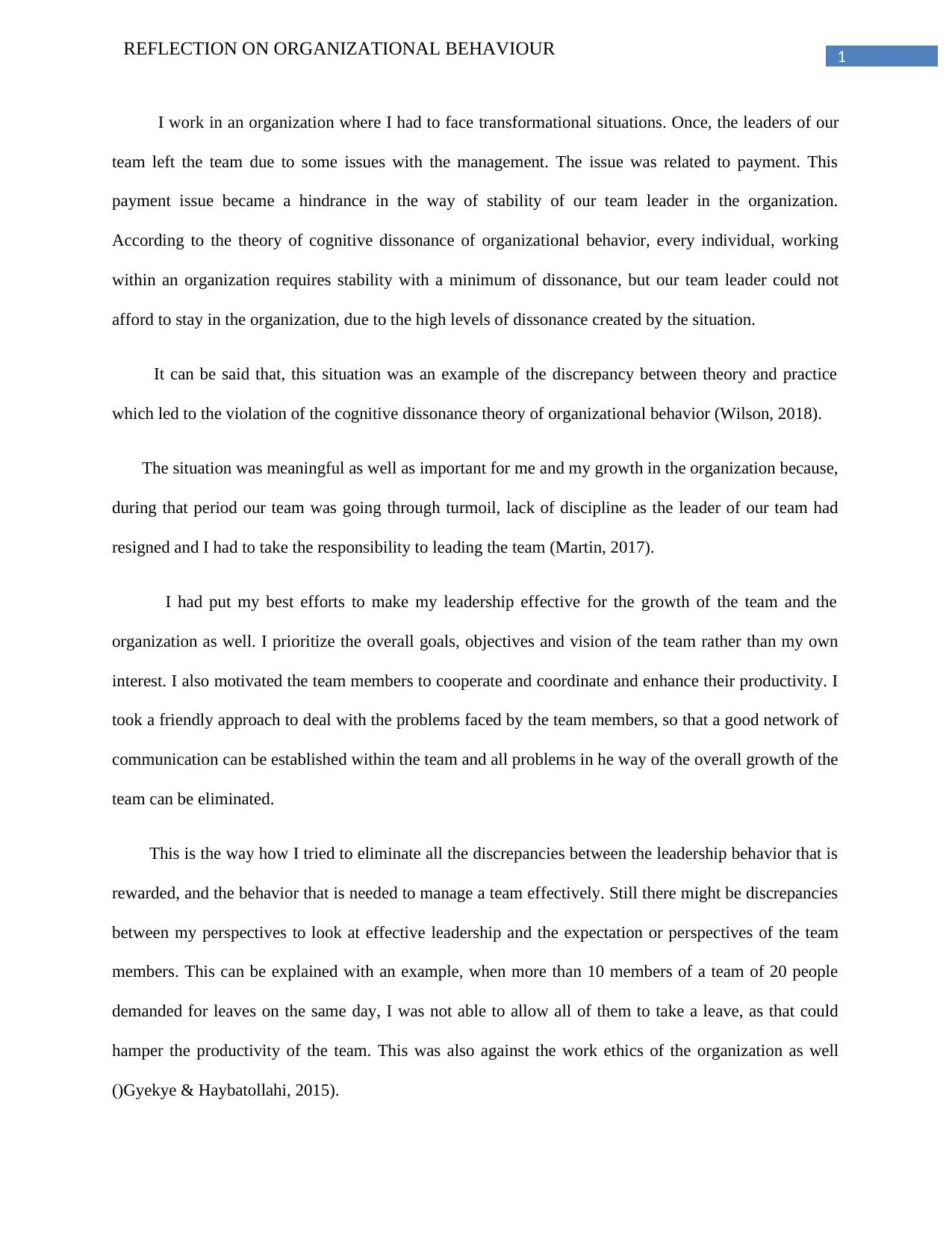
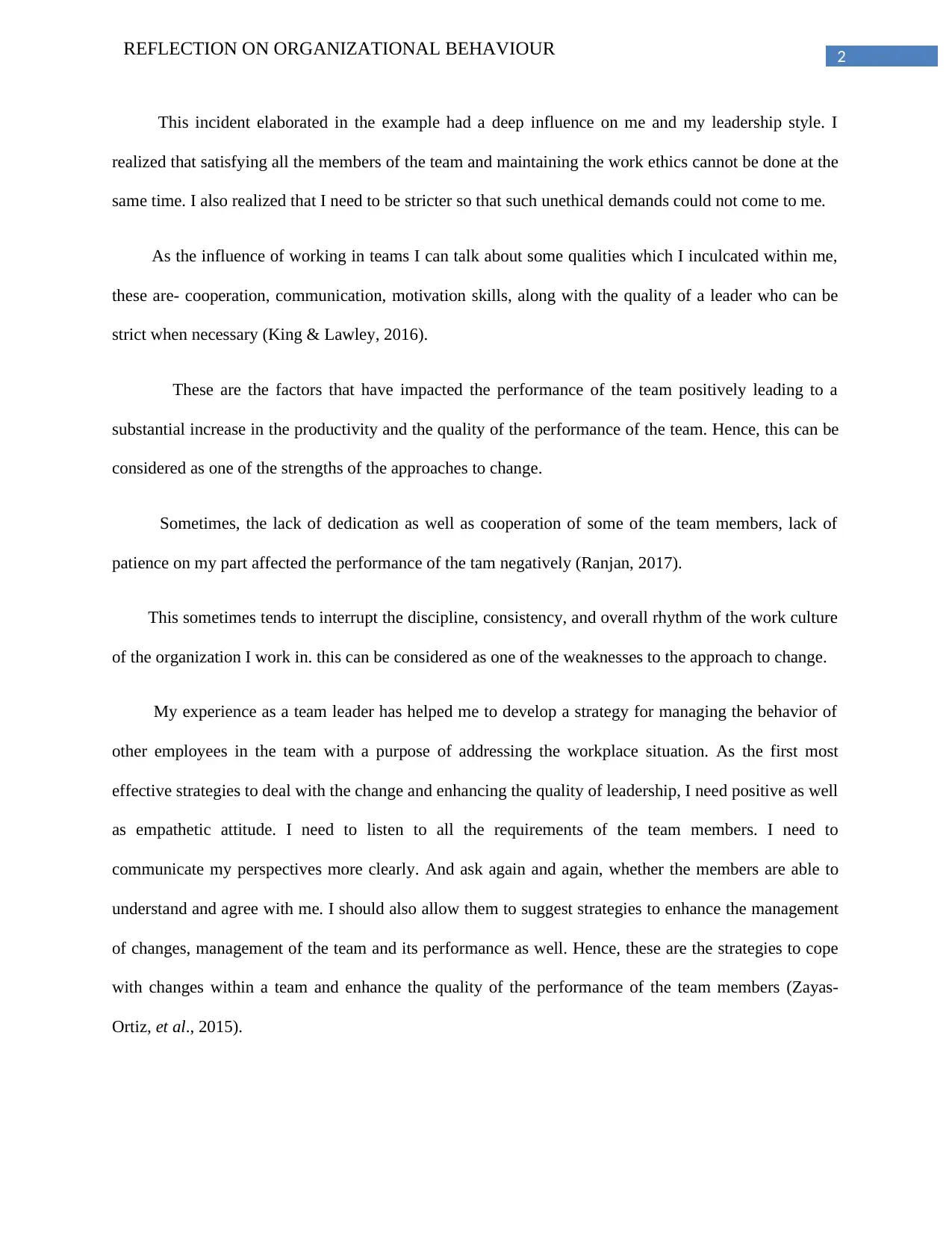

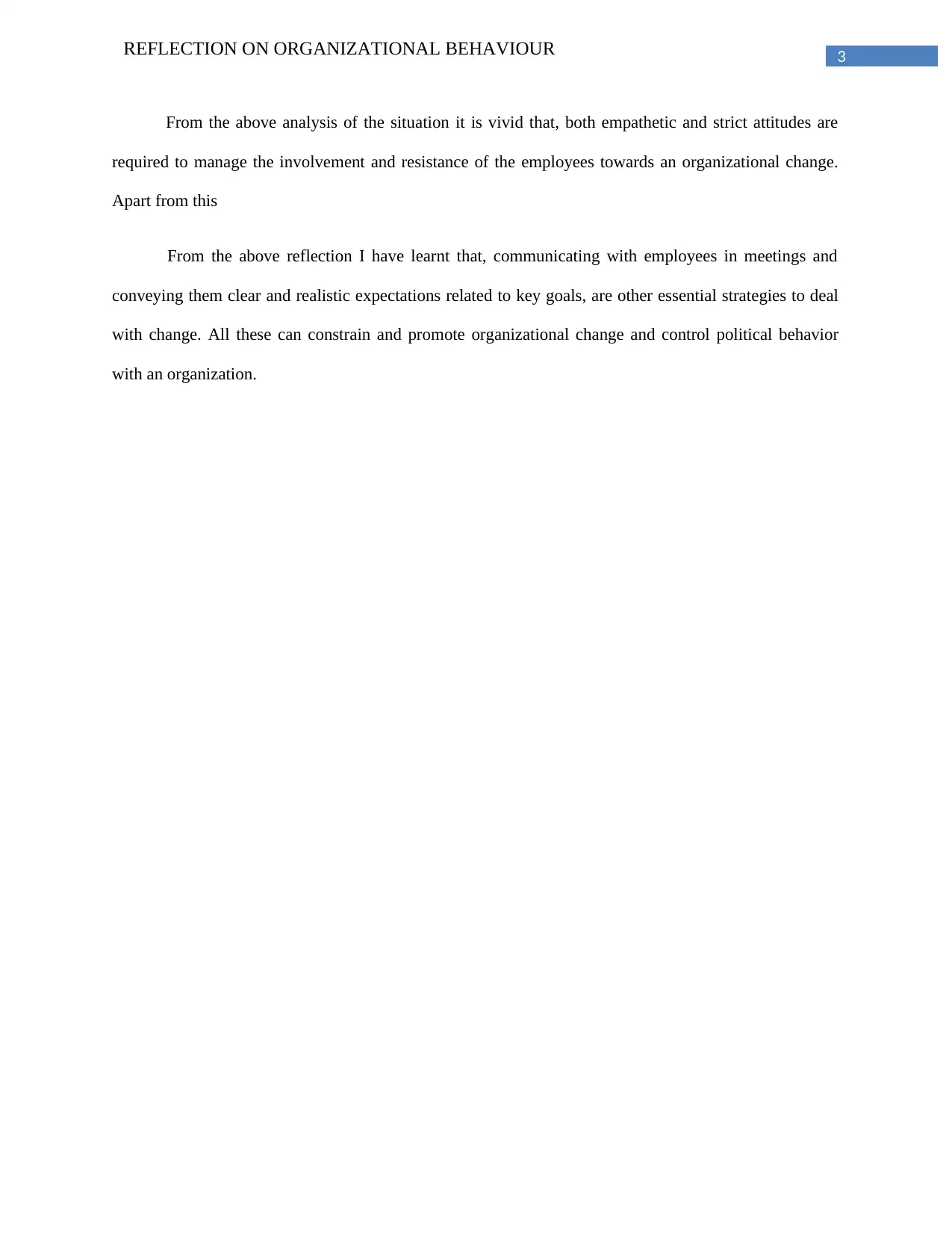
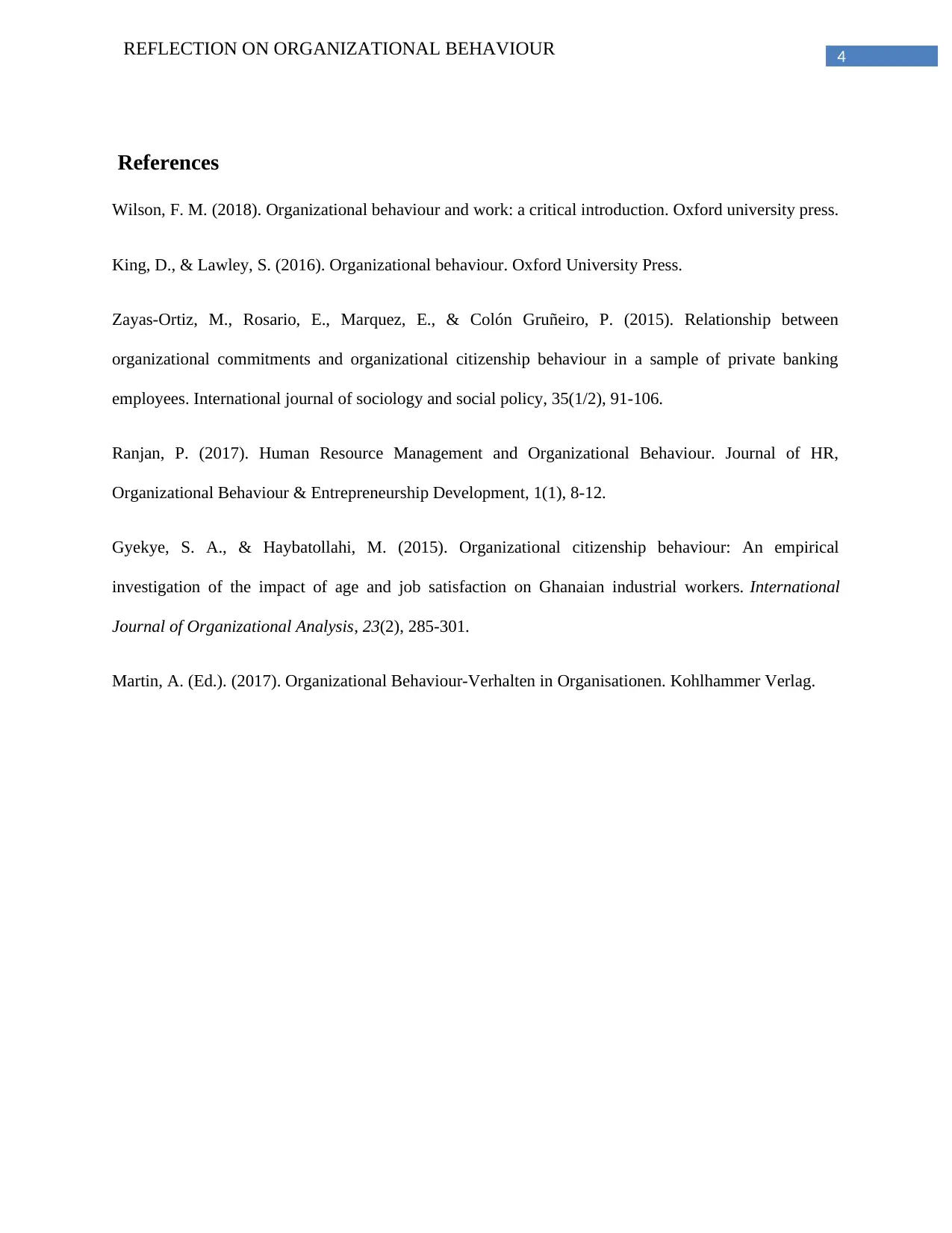






![[object Object]](/_next/static/media/star-bottom.7253800d.svg)